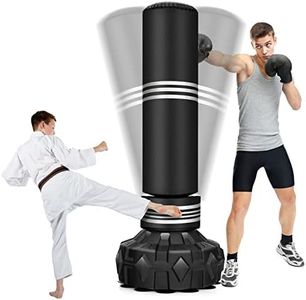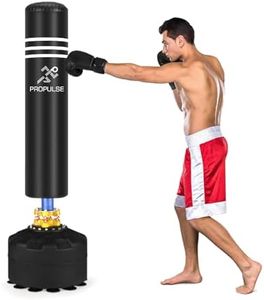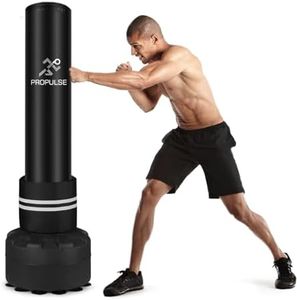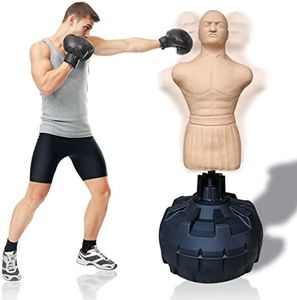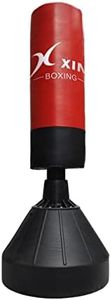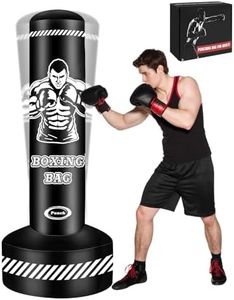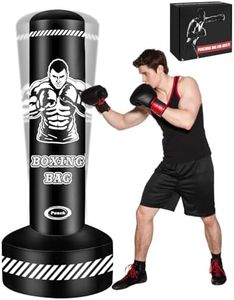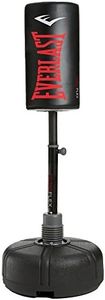We Use CookiesWe use cookies to enhance the security, performance,
functionality and for analytical and promotional activities. By continuing to browse this site you
are agreeing to our privacy policy
10 Best Freestanding Heavy Bags
From leading brands and best sellers available on the web.Buying Guide for the Best Freestanding Heavy Bags
Choosing a freestanding heavy bag is all about matching your workout style, space, and training goals. These bags are popular because they offer mobility and flexibility—you don’t need to drill holes in your ceiling or wall, and you can move them as needed. However, not all freestanding bags are created equal; different specs will affect how it feels, how much it moves, and what sort of training it’s good for. Understanding the main specs will help you pick the right bag for your fitness journey.HeightHeight determines the type of strikes you can practice, such as kicks, punches, or knees, and whether the bag is comfortable for your body size. Shorter bags (around 4 feet or less) are good for practicing low kicks and may be suitable for children or smaller users. Taller bags (5–6 feet) are better for adults, enabling full-body training. To find the right height, consider what techniques you’ll be using most: if you’re into boxing, a mid-sized bag might be enough, but for martial arts involving high and low kicks, a taller bag is ideal.
Weight/Base StabilityThis spec covers both the bag’s own weight and how stable its base is when hit. Heavier bags and bases are less likely to tip or slide, which is crucial if you strike with power. Light bases are easier to move and might be fine for lighter training, but they may wobble or move if hit hard. For genuine strength training and stability, look for adjustable or heavier bases—many can be filled with sand or water. Select a heavier, more stable unit if you plan on intense workouts; choose a lighter one if you need portability or plan light training.
Striking Surface MaterialThis refers to what the outer covering is made of, commonly synthetic leather (PU or vinyl), real leather, or even canvas. Synthetic materials are more affordable and easy to clean, but may wear out faster under heavy use. Real leather is more durable and feels great but needs more care and tends to cost more. Canvas is tough, but rougher on the skin. Choose based on how often and how intensely you’ll train. Regular, hard hitters will benefit from more durable material, while lighter, less frequent users can opt for synthetic covers.
Padding and Shock AbsorptionThe type and thickness of padding affect how it feels to hit the bag. Softer padding is gentler on joints and beginner hands, while firmer bags resist deep impacts and last longer. Some bags use specialized foam for better shock absorption, which reduces strain on wrists and ankles. Think about your comfort and injury risk: if you’re new or have sensitive joints, softer, well-padded bags are best; if you need realism or have tough, conditioned hands, firmer bags may suit you better.
Base Shape and MobilityThe design and shape of the base affect not just stability, but also how easily you can move the bag when needed. Some bases are round and roll easily, while others are wider or flatter for increased stability but can be harder to transport. If you plan on moving the bag often, look for a design that allows easy rolling or lifting. If your training area is limited and the bag will stay put, prioritize a stable base instead.
